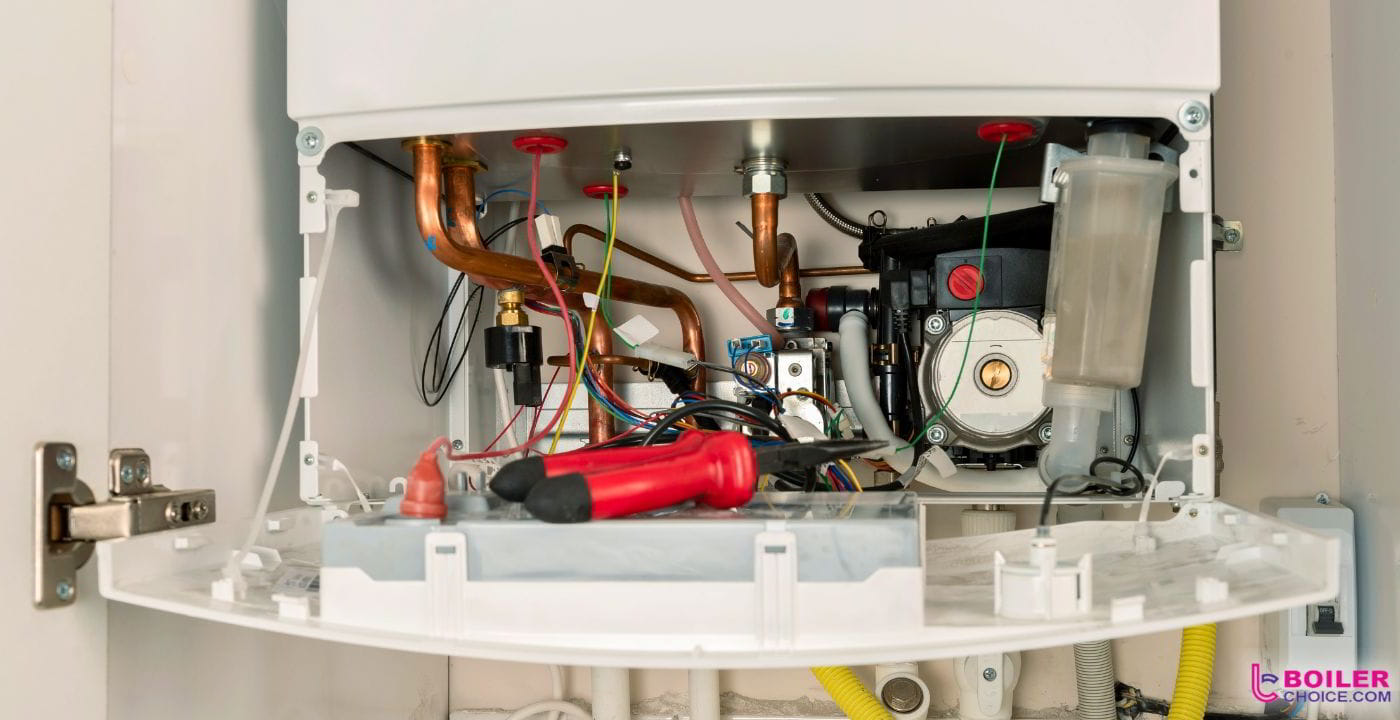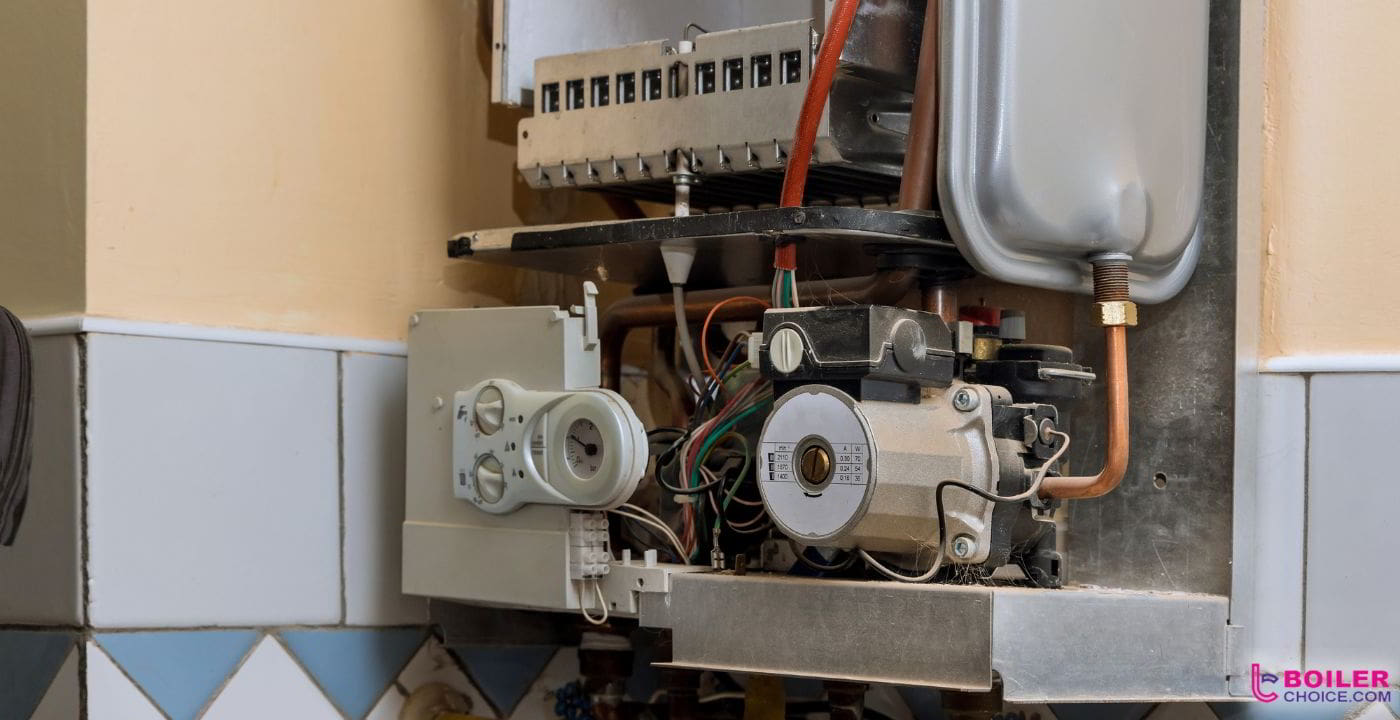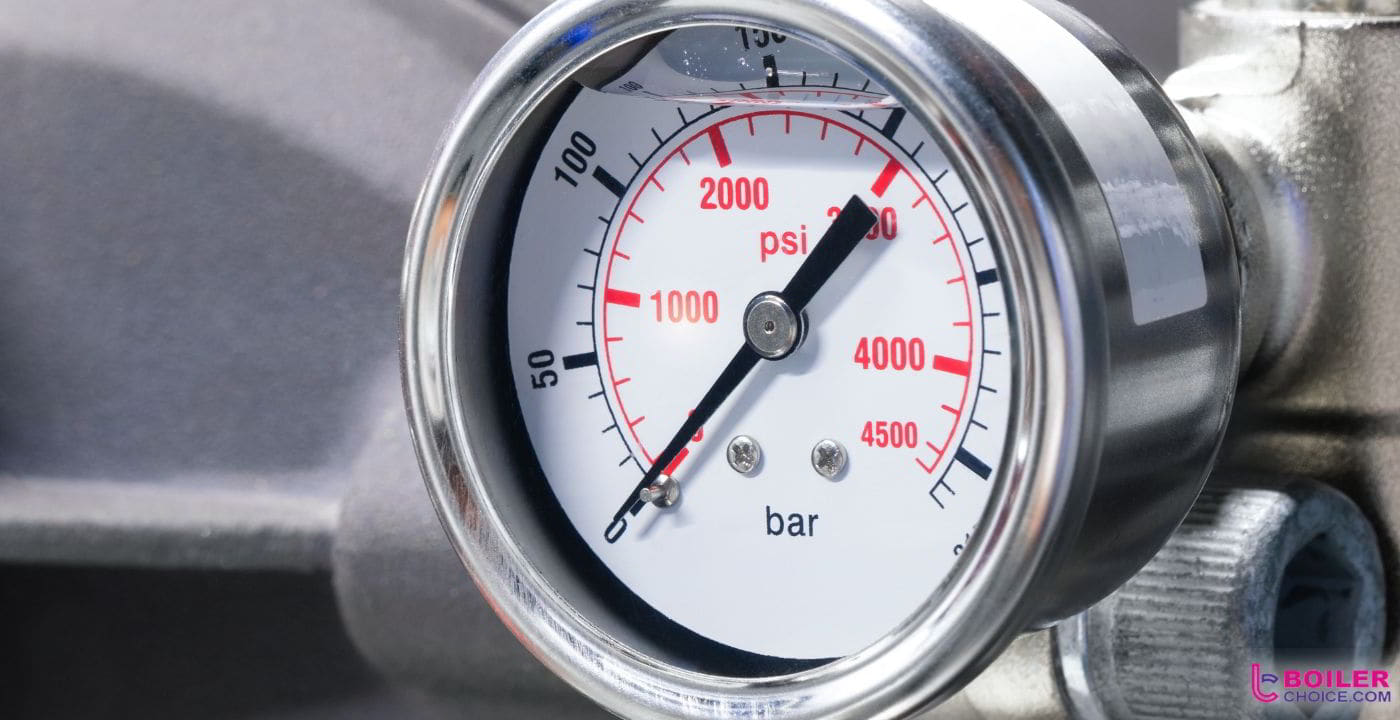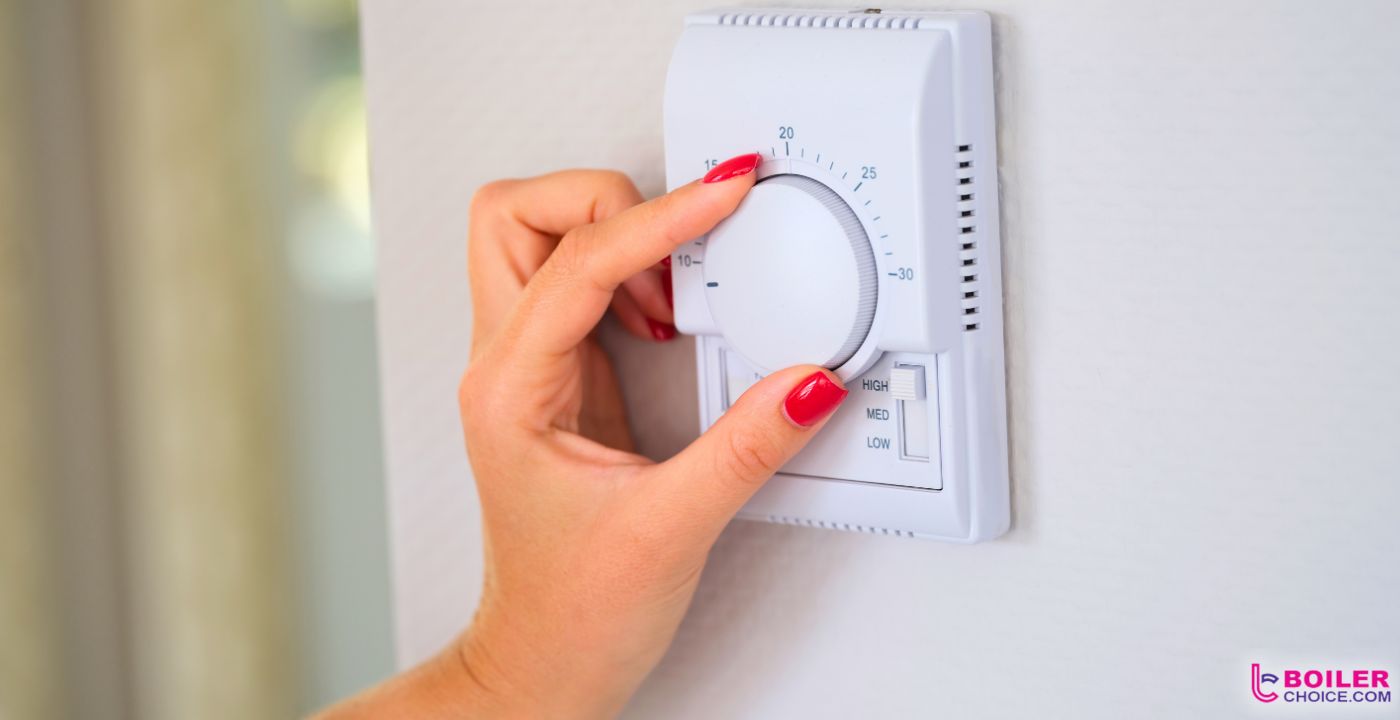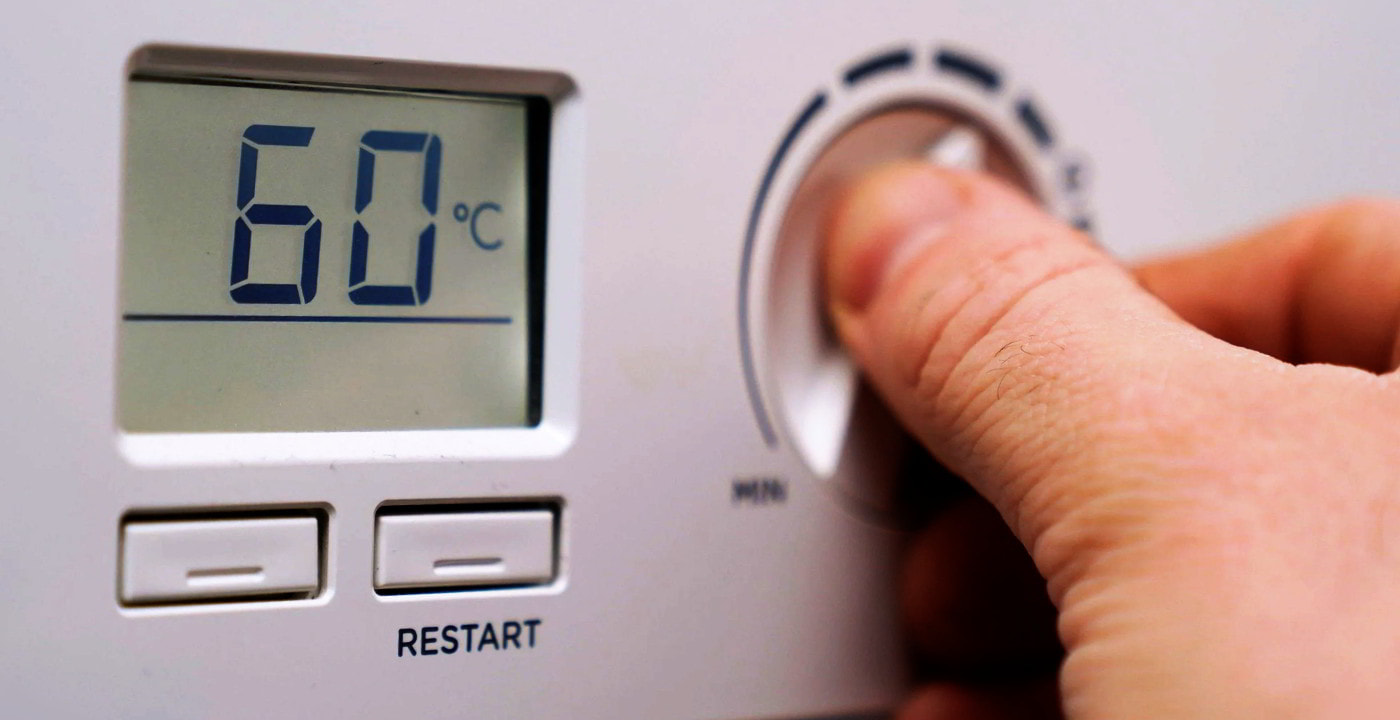
Contrary to common misconceptions, the optimum temperature at which to set a combi boiler is not referring to the temperature setting for the thermostat or the ambient room temperature, but rather the temperature of the water in the boiler before it is distributed around your home.
There are various different factors that can impact the best settings for a combi boiler, but as a rule of thumb, most boiler manufacturers recommend that combi boilers be set within a range of 60°C to 70°C for heating, and no lower than 50°C for hot water.
With that being said, there is much more to this story. For instance, the optimum temperature setting for someone whose prime concern is comfort will be different to households where the major consideration is reducing the cost of their energy bills. If you want to learn the best temperature settings to meet your own individual requirements, then please read on.
Key Takeaways
- Generally speaking, the lower the temperature the better.
- Lowering the heating flow temperature improves the efficiency of combi boilers.
- Combi boilers operate at their most efficient when the heating flow temperature is set to 45°C.
- Hot water flow temperature shouldn’t be set below 50°C (to avoid the risk of Legionnaires’ disease), nor should it exceed this for safety reasons (to avoid the risk of scalding or burning).
- You should experiment with different flow temperatures to identify the lowest setting at which you remain comfortable.
- If you choose to turn off your central heating in the summer, you should turn it on once every two or three weeks to avoid a build-up of contaminants in the pipework.
What's the Optimum Temperature to Set a Combi Boiler?
In order to identify the optimum temperature setting for a combi boiler, we must first understand how combi boilers work.
Combi Boiler Background Information
Ever since April 2005, it has been a legal requirement for all new boilers to incorporate condensing technology. Whilst the terms “combi boiler” and “condensing boiler” are often used interchangeably, to do so isn’t entirely accurate.
Although it’s true that all modern combi boilers are condensing boilers, not all condensing boilers are combination boilers. For example, system boilers are also legally required to use condensing technology.
How Condensing Boilers Work
Condensing boilers work by extracting more heat from the combustion process than traditional boilers. This results in greater energy efficiency and lower fuel consumption.
Condensing technology enables these improvements by capturing and utilising the latent heat contained in the water vapour produced during the combustion process that would otherwise be lost in older boilers.
Combi Boiler Flow Temperature
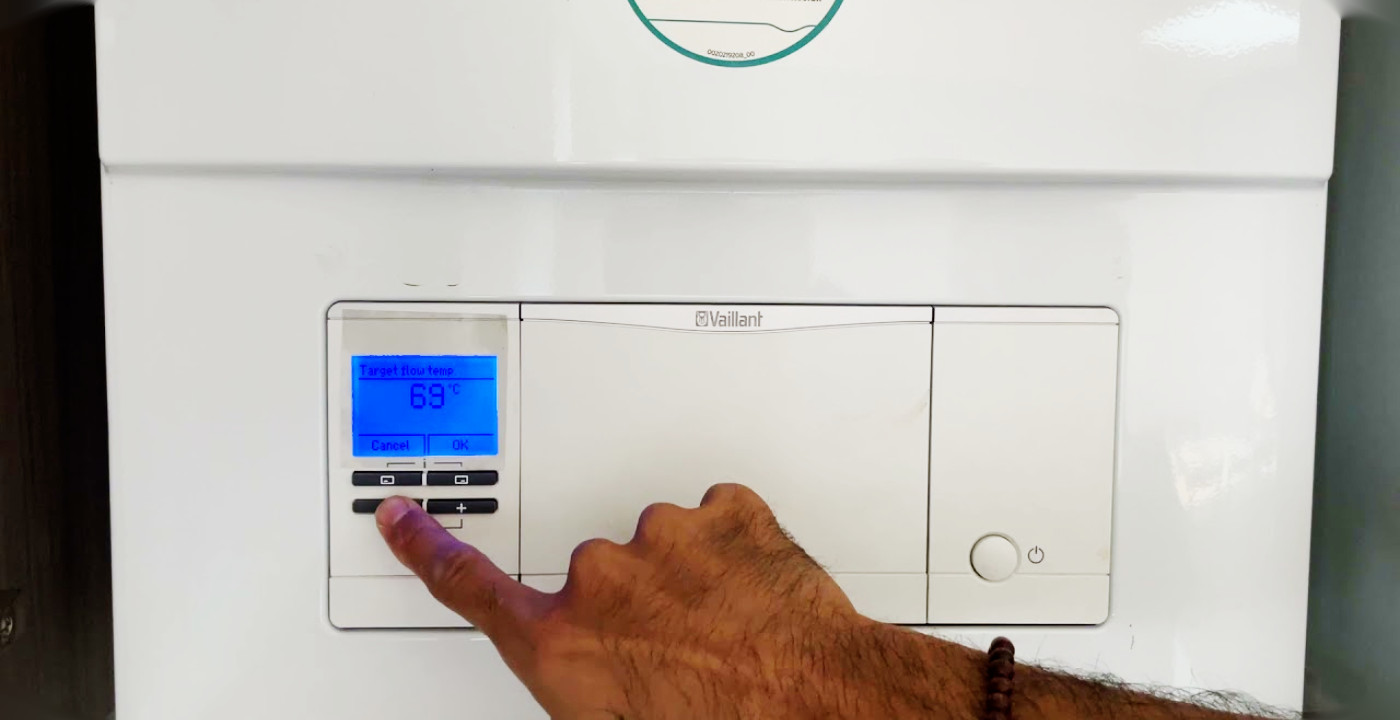
Now that we understand how condensing boilers work, and that boiler temperature refers to the temperature of water in the boiler, rather than the thermostat or target room temperature, let’s take a closer look at what that actually means.
What is Combi Boiler Flow Temperature?
When we say the temperature of the boiler, we’re referring to the temperature to which the boiler heats the water before sending it out to your radiators, or your hot water taps (bath/shower etc.). This is also known as the flow temperature.
For central heating, the water is heated to a chosen temperature, it goes through the system (flow) and eventually feeds back into the boiler at a lower temperature (return). The heat “lost” during this cycle is the heat that warms your home.
As an example, we noted in the introduction that the most commonly recommended flow temperature range for central heating with a combi boiler is between 60°C and 70°C.
Example Flow Temperature Setting
So, If we set the boiler to 70°C, the flow temperature is 70°C, the return temperature is 50°C and the 20°C difference is what heats your radiators. This flow temperature flow is represented as 70/50.
Combi Boiler Spring/Autumn Settings
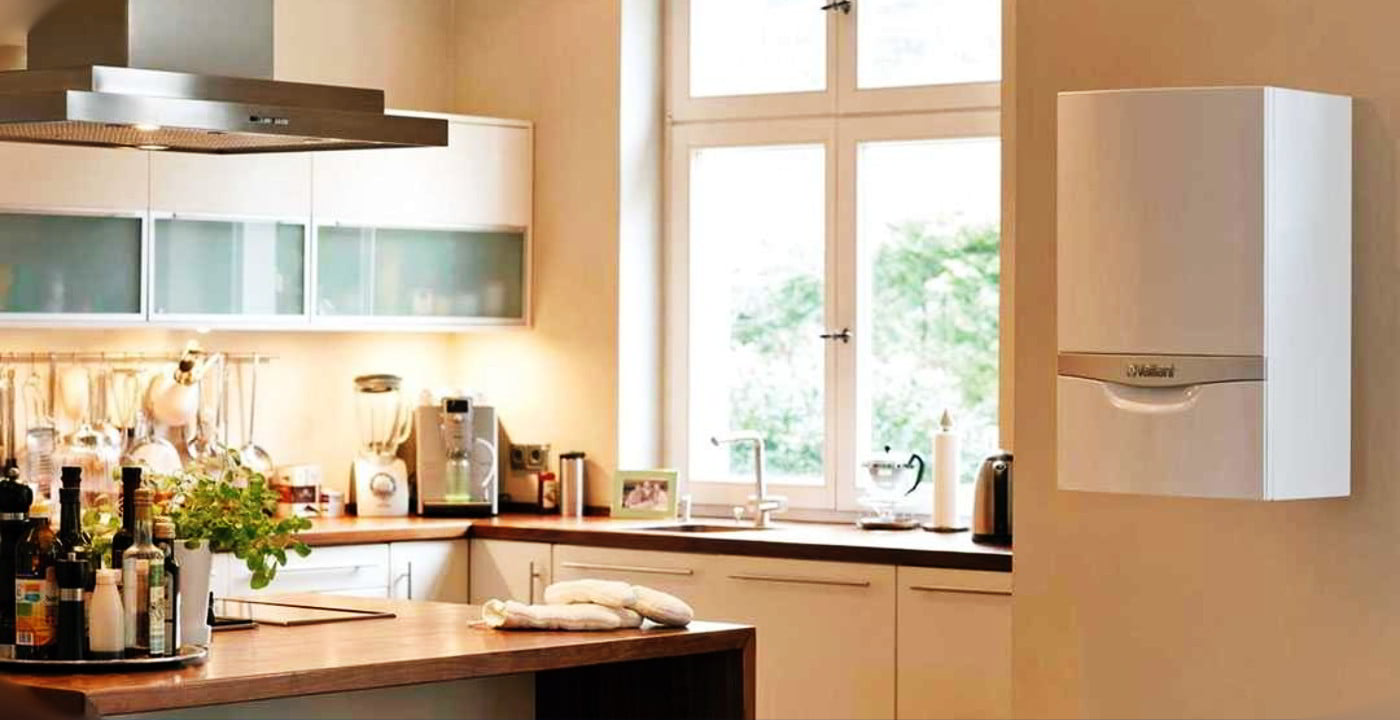
It goes without saying that optimising your heating settings is of most concern during the winter and everything we have discussed so far is to accommodate the colder, winter months. During spring and autumn, it’s advisable to lower your heating flow temperature as less heat is required to maintain your preferred room temperature.
What are the Best Spring/Autumn Combi Boiler Settings?
This can take a little trial and error to get right but as a general rule of thumb, we suggest you try setting your heating flow rate temperature to somewhere between 45°C to 55°C. We probably don’t need to tell you that, for most people, given the current sky-high gas and electricity prices, it’s very much a case of the lower the better.
Complimentary to this, most modern combi boilers operate at their most efficient with a heating flow temperature of 45°C, so lowering the temperature will both save you money and optimise your combi boiler’s performance.
Combi Boiler Summer Setting
During the summer season, it’s rare to require any central heating, although given the nature of British weather in the summer some people opt to keep their central heating on. If you choose to do this, then we suggest keeping the heating flow temperature no higher than 45°C.
Some combi boilers, like this Ideal Logic Max 30, come with automatic summer/winter presets, which makes accommodating the changing seasons and temperature as easy as flicking a switch or pressing a button.
Of course, many people choose to switch their central heating off altogether during summertime. There’s no problem with doing this but, if that’s your intention, then it’s wise to turn the heating on once or twice a month just to keep it ticking over and avoid any build-up in your radiators.
Combi Boiler Water Temperature Setting
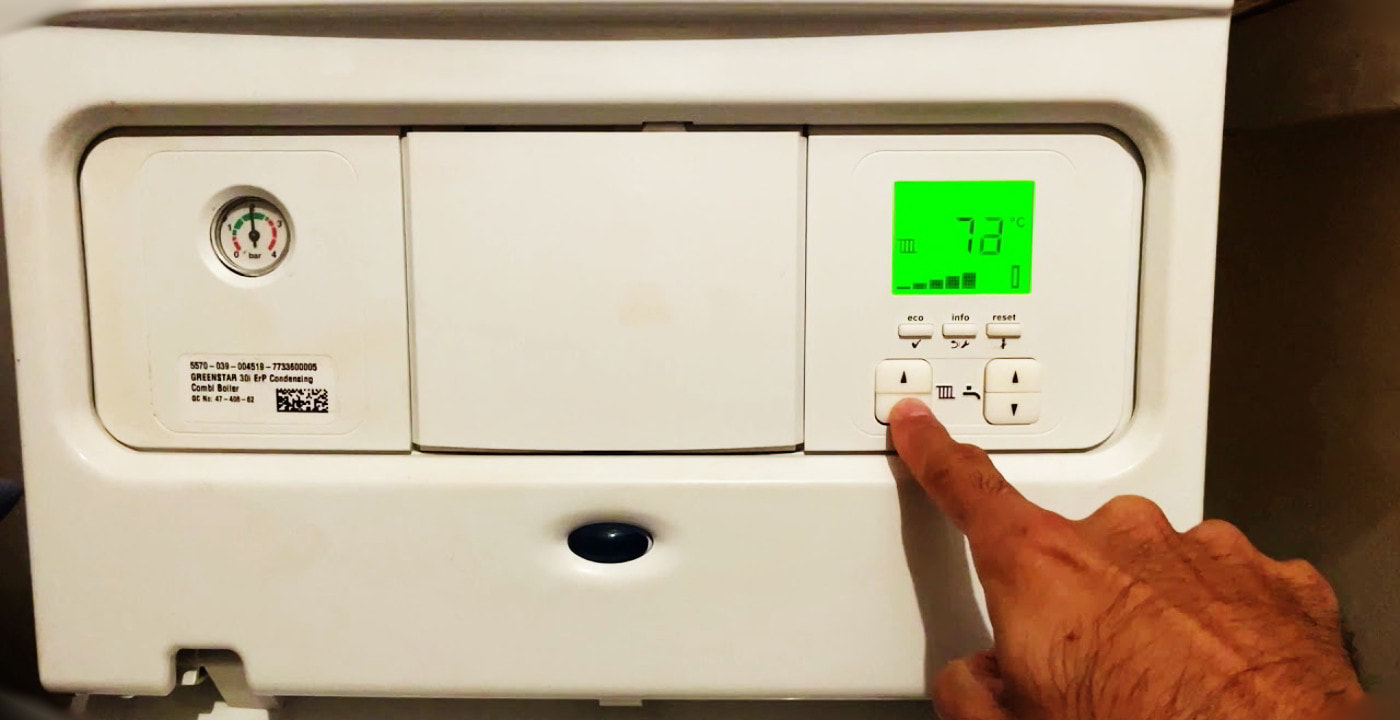
So far, we’ve been focused on how your combi boiler works to heat your home. But combi boilers don’t only heat your home, they also provide it with hot water. In modern combination heating systems, the hot water flow temperature is controlled by a different setting to the heating flow temperature setting and, as per our introductory note, the hot water temperature should be set no lower than 50°C.
How do Combi Boiler Water Temperature Settings Work?
You’ll notice that, whilst the heating flow temperatures are shown with the flow/return format (70/50), hot water flow temperatures only use a single temperature (50). This is because the water used for your hot water taps does not return to the system, and consequently, much less heat is lost by the time you get your hot water out of the taps (shower, bath, etc.).
Why are Combi Boiler Water Temperature Settings Important?
The government’s Health & Safety Executive (HSE) recommends that hot water be no higher than 44°C for showering or bathing, which is why the hot water flow temperature setting should never exceed 50°C. Anything above the recommended temperature setting risks scalding and potentially serious injury.
As per HSE guidelines, hot water temperature must not drop below 50°C, though; this is in order to avoid the risk of Legionnaires’ disease (Legionella bacteria multiply where temperatures are between 20°C and 45°C).
Most Economical Settings For a Combi Boiler
As we have already seen – and let’s be honest, it kind of goes without saying – the lower you set your combi boiler heating temperature setting the cheaper it will be to run.
However, depending on your own personal disposition, it may also be worth trying out lowering your water flow temperature to see if you can shower or do the washing up with slightly cooler water than you usually use.
This is perhaps most applicable during summer, and given that last summer temperatures spiked to over 40°C, it will probably become increasingly relevant in the years to come.
Conclusion
Whilst combi boilers are generally the most efficient types of boilers on the market, it’s possible to improve their efficiency and lower running costs by adjusting the flow rate of the central heating.
If you’re looking to further reduce your energy consumption, you can set your central heating flow rate towards the lower end of the recommended temperature range during winter. You should also try lowering the thermostat/room temperature to see if you can live comfortably with less heating.
To further improve your current situation you might want to consider improving your home’s insulation which can have a significant impact on your energy usage and monthly bills. For further information about the costs of running your boiler, you can take a look at this article for a more detailed explanation of how much energy boilers typically use.
Until next time, stay warm and stay well!

